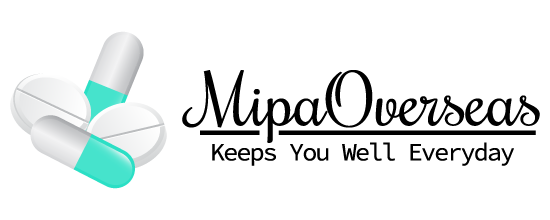What is Erythromycin Tablets?
Erythromycin is an antibiotic medication that belongs to a class of drugs known as macrolides. It is commonly used to treat a variety of bacterial infections. Erythromycin works by inhibiting the growth of bacteria, thereby helping the body’s immune system to eliminate the infection.
Erythromycin is available in various forms, including tablets, capsules, and as a liquid suspension. It can be prescribed to treat a range of infections, such as respiratory tract infections, skin infections, ear infections, and certain sexually transmitted diseases like chlamydia.
Erythromycin Tablets Uses
- Respiratory Tract Infections: Erythromycin can be used to treat respiratory tract infections such as pneumonia, bronchitis, and pertussis (whooping cough). It is effective against certain strains of bacteria responsible for these infections.
- Skin and Soft Tissue Infections: Erythromycin can be used to treat skin and soft tissue infections caused by susceptible bacteria. This includes conditions like cellulitis, impetigo, and erysipelas.
- Acne: Erythromycin is sometimes used topically or orally to treat acne. It can help reduce inflammation and kill the bacteria responsible for acne lesions.
- Sexually Transmitted Infections: Erythromycin can be used as an alternative treatment for certain sexually transmitted infections (STIs) like chlamydia, especially in cases where other antibiotics are not suitable.
- Gastrointestinal Infections: Erythromycin can be used to treat gastrointestinal infections like Campylobacter enteritis, which is a bacterial infection causing diarrhea.
- Legionnaires’ Disease: Erythromycin can be used to treat Legionnaires’ disease, a severe form of pneumonia caused by the bacterium Legionella pneumophila.
- Prophylaxis for Rheumatic Fever and Bacterial Endocarditis: In some cases, erythromycin may be used to prevent certain bacterial infections in individuals with specific heart conditions, especially for those who are allergic to penicillin.
- Dental Infections: Erythromycin may be used in dental practice to treat certain oral infections.
Erythromycin Tablets – Mechanism of Action and Pharmacology
- Inhibition of Protein Synthesis:
- Erythromycin primarily works by inhibiting bacterial protein synthesis. It does this by binding to the 50S subunit of the bacterial ribosome, which is a cellular structure responsible for assembling proteins.
- By binding to the ribosome, erythromycin prevents the addition of new amino acids to the growing protein chain. This interference disrupts the ability of the bacteria to produce essential proteins necessary for their survival and reproduction.
- Bacteriostatic or Bactericidal Effects:
- The effect of erythromycin on bacteria can be both bacteriostatic and, at higher concentrations or against more susceptible strains, bactericidal.
- Bacteriostatic means that it inhibits the growth and reproduction of bacteria, allowing the body’s immune system to effectively eliminate them. Bactericidal means that it directly kills the bacteria.
- Spectrum of Activity:
- Erythromycin is effective against a wide range of bacteria, including Gram-positive bacteria like Streptococcus species (which cause various types of infections including strep throat) and Staphylococcus species (including some strains that cause skin infections).
- It is also effective against some Gram-negative bacteria, but its activity against these types is generally more limited compared to its action against Gram-positive bacteria.
Erythromycin Tablets- Composition and Active Ingredients
- Active Ingredient:
- Erythromycin (as erythromycin base or erythromycin ethylsuccinate or erythromycin stearate): This is the primary therapeutic component responsible for the antibiotic properties of the medication.
- Inactive Ingredients:
- Fillers and Binders: These are substances used to give the tablet its form and hold it together. They may include substances like lactose, cellulose, and various types of starches.
- Disintegrants: These are added to help the tablet break apart in the digestive system. Common disintegrants include crospovidone and croscarmellose sodium.
- Glidants and Lubricants: These are used to improve the flow properties of the powdered mixture during tablet manufacturing. Examples include magnesium stearate and colloidal silicon dioxide.
- Coating Agents (if applicable): Some tablets may have a coating to make them easier to swallow, to protect the contents from moisture or light, or to provide a delayed-release effect.
Erythromycin Tablets– Side-effects
- Gastrointestinal Disturbances:
- Nausea
- Vomiting
- Diarrhea
- Abdominal pain or cramps
- Loss of appetite
- Allergic Reactions:
- Rash or hives
- Itching
- Swelling, especially of the face, lips, tongue, or throat
- Severe dizziness
- Difficulty breathing
- Central Nervous System Effects:
- Headache
- Dizziness
- Confusion
- Hearing and Balance Issues:
- Ringing in the ears (tinnitus)
- Hearing loss (usually reversible and more common with high doses)
- Liver Function Abnormalities:
- Elevated liver enzymes
- Hepatitis (inflammation of the liver)
- Skin and Soft Tissue Reactions:
- Stevens-Johnson Syndrome (a severe skin reaction)
- Photosensitivity (increased sensitivity to sunlight)
- Erythema Multiforme (a skin disorder)
